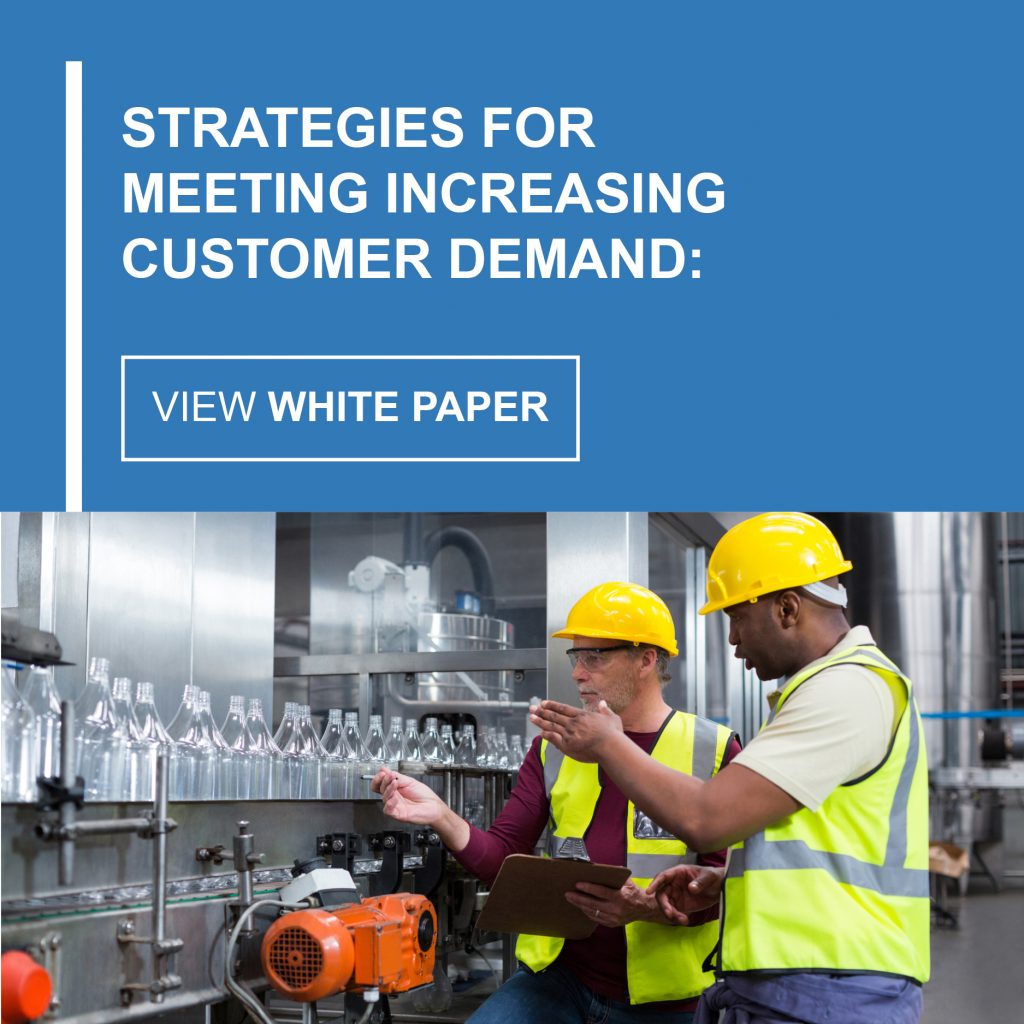
How to Combat Labor Shortages and Skills Gaps in Food Manufacturing
The food and beverage manufacturing industry is facing labor shortages. While labor challenges aren’t new to the industry, the reasons for this current situation are. The pandemic brought about a seismic shift and disruption for nearly every industry, F&B included. Many companies, like Smithfield Foods and Tyson Foods, saw closures of multiple facilities. Others stayed the course but laid off employees, and as the country begins emerging into a post-pandemic new reality, some of those employees simply aren’t returning to their jobs.
There’s also the matter of older workers retiring and not enough young workers entering the industry, leaving a skills gap as those veterans take their institutional knowledge out the door with them.
Together, they add up to a two-pronged labor shortage problem. You not only don’t have enough people to get the job done, the people you do have aren’t as skilled as the ones you lost.
Let’s look at both of those prongs in more detail.
Labor shortage challenges and questions
Like many industries, F&B is getting a handle on whether changes brought about by the pandemic will be permanent. Some challenges like supply chain disruptions can go away forever, please, but other aspects, like the adaptation of workflows, processes and procedures have proven to be positive changes.
Some questions F&B processors are grappling with now:
- Our staffing levels are down. Do we really need to staff up to pre-pandemic levels?
- Our demand is increasing. Can we meet rising demand with less staff?
- Will new configurations on the shop floor to accommodate social distancing continue if and when the entire workforce is vaccinated?
- How will companies deal with potential work stoppages in the future?
- Will we adapt to more regional, less centralized facilities?
- Should we change our forecasting model from yearly to quarterly or even monthly to be more agile?
Solution: Process improvements
The answer to all of these questions is: It depends on efficiency. Some companies, when aiming to do more with current assets and employees or, especially when they’re seeking to do more with fewer employees because of a labor shortage like the one we’re in now, turn immediately to automation, machinery upgrades, even artificial intelligence. The aim is to take the human element out of the equation or reduce it dramatically, with the goal of streamlining and speeding up operations.
But is all of that upfront expense worth it?
Time and time again, clients have come to us after trying to “buy their way to profitability” through large capital investments in technology and automation, only to see that profitability disappear because of high overhead costs of those upgrades.
A better solution to dealing with this labor shortage, keeping up with rising demand, and doing it all with fewer people is to optimize your processes first.
At USC Consulting Group, we’ve helped hundreds of businesses navigate operational challenges so they can get the job done efficiently and better meet the needs of their customers. The key to doing more with less, or even doing more with your current assets, is taking a deep dive into your operations to discover ways to be more efficient. That’s one of our specialties, and we’ve been doing it for more than 50 years.
In one example, we worked with a poultry processor that experienced just this situation, making huge capital investments only to see any gains eaten up by high overhead costs.
We created cross-functional teams to evaluate the operation, highlighted the non-value-added activities and conducted analysis. Based on those findings, the teams identified waste and process variations that were causing lower yields, created improvements in workstation layouts and material flow, and conducted training sessions designed to impact yield performance. All told, we identified 300 loss points within their operation. Results?
By the end of our six-month engagement, the company saw a financial gain of $100 million, all realized without capital investments. That’s not chicken feed! Read more about it in our case study, “Poultry Processor Gobbles up Savings From Process Automation.”
Skills gap challenges
The other prong to today’s labor shortages in food and beverage manufacturing has to do with older, veteran workers leaving their jobs and taking their knowledge with them.
If you’ve got a team filled with long-tenured employees, you know what this is like. It’s one thing to train someone new on the basics of the job. It’s something else to lose your best worker who spent a career doing that job. It’s the experiences, processes, deep understanding and “this comes naturally” abilities of your people to get the job done in an intuitive way. The hard-won, trial-and-error-gleaned instincts that your senior people have absorbed from years on your front lines. That’s your company’s institutional knowledge.
When older workers retire or are laid off, that’s what you’re losing.
Skills gap solutions
There are a few tactics you can use to help close the skills gap.
Mentorship. Do you have a mentorship program in place? It can be an invaluable (and very low cost) way to transfer knowledge from your seasoned pros to your newbies.
Recorded interviews. Talk to your older employees about lessons learned on the job, hard-won experience and mistakes that taught them the right way to do things. Record those interviews for new hires to watch as part of their onboarding process.
Involve employees in process improvements. We’ve found that one of the most critical parts of enacting process improvements to create greater efficiency in our clients’ operations is getting buy-in from the front lines. Without it, we can find all the hidden opportunities for efficiency in the world but putting them into practice will be a challenge without your team on board. Getting your employees invested in process improvements from the get-go also has the added benefit of creating institutional knowledge. The younger workers were there when the process was changed, they contributed to it and they’ll carry that knowledge with them as long as they work for you.
Like many of the challenges we’ve experienced over the past couple years, silver linings can emerge from food manufacturing labor shortages and skills gaps. You can find better, more efficient operations without making huge capital improvements, and through that process, you can create institutional knowledge in your employees and close that skills gap for good.
At USC Consulting Group, we’re subject matter experts in helping companies find more efficiency out of their current assets. Learn more about doing more with the same or less resources in our white paper “Strategies for Meeting Increasing Customer Demand.”







